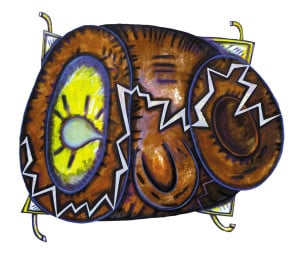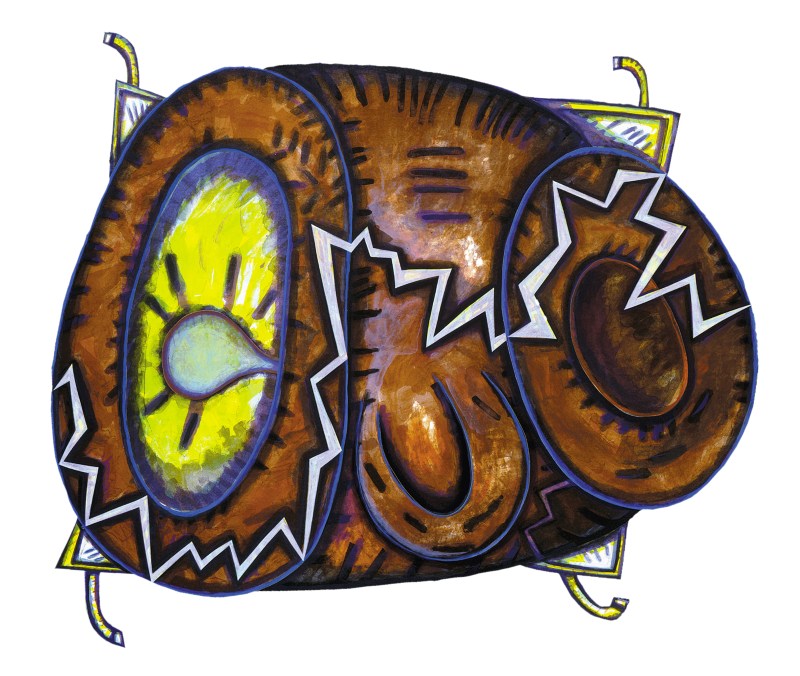The “’Her Story: Prints by Elizabeth Murray” exhibition at Cantor Arts Center draws its name from a collaboration between Murray, an artist, and poet Anne Waldman. The pages of the “green book” are lined up along one wall of the exhibit room, the left side of the page a poem from Waldman and the right a print from Murray. It is a twist on the storybook concept, and yet while each poem seems to speak from the painting, it still stands on its own.

One poem seems to speak for both Waldman and Murray at the same time—“I saw the/rhythms inside/They were stark/& joyous/& I painted them/All to see.”
Murray, a 1999 MacArthur Grantee, was a postmodernist artist who explored the realms of motion and dimension via painting and printmaking. While she was initially a painter, she began printmaking when she was 40 years old and worked with Universal Limited Art Editions (ULAE), a renowned fine-art print press, to produce much of the work that is currently on exhibit at Cantor.
Even in the two-dimensional pages of the “green book,” Murray’s work challenges the confines of paper, especially coming from a time when painting was slowly going out of style. The pieces have the cartoony feel of Walt Disney, but also the eerie depth of Pablo Picasso, the ultimate blend of Minimalism and Pop, as well as Cubism, Surrealism and Expressionism. They are fluid and explore motion. We do not just see Murray’s prints and paintings—we catch them in medias res.
Three of Murray’s large-scale paintings hang in the gallery, though the passivity of “hang” hardly captures the presences of “Chain Gang,” “My Manhattan, January” and “Things To Come.” Though described as “paintings,” they are not two-dimensional in any sense. Parts of the canvas loop into themselves, springing from the walls. These three pieces highlight Murray’s relationship between painting and printmaking, one that, like many of her other works, cannot be confined to a single medium.
All 42 of Murray’s prints from ULAE are on display. Many depict typical household objects, such as the earlier-mentioned chair, shoe and shack.
Like her paintings, Murray’s prints seem to pop from the display. The literal dimensionality of the piece is hardly relevant. Whether because of the crosshatch shading etched along the edges of the chair, or the paper-strip-turned-shoelace dangling from the cutout-hole-turned-eyelet, or the bold colors that glow from the shack, her prints convey a feeling of motion and pop from the paper.
For instance, “Undone” is a print that, first of all, is not on a traditionally rectangular canvas. It is made of layering three sheets with a hole cut out from the center. Long cords are depicted strewn across the sheet. The baby’s foot at the bottom of the print hints at a natal theme. The entire piece is fluid, from the curves of the umbilical cord to the fanning of the three sheets.
When visiting the Murray’s exhibition, the first wall that I encountered read, “Art is epiphany in a coffee cup.”
…and in a city, and in a shoe, and in movement, I concluded after my visit.
